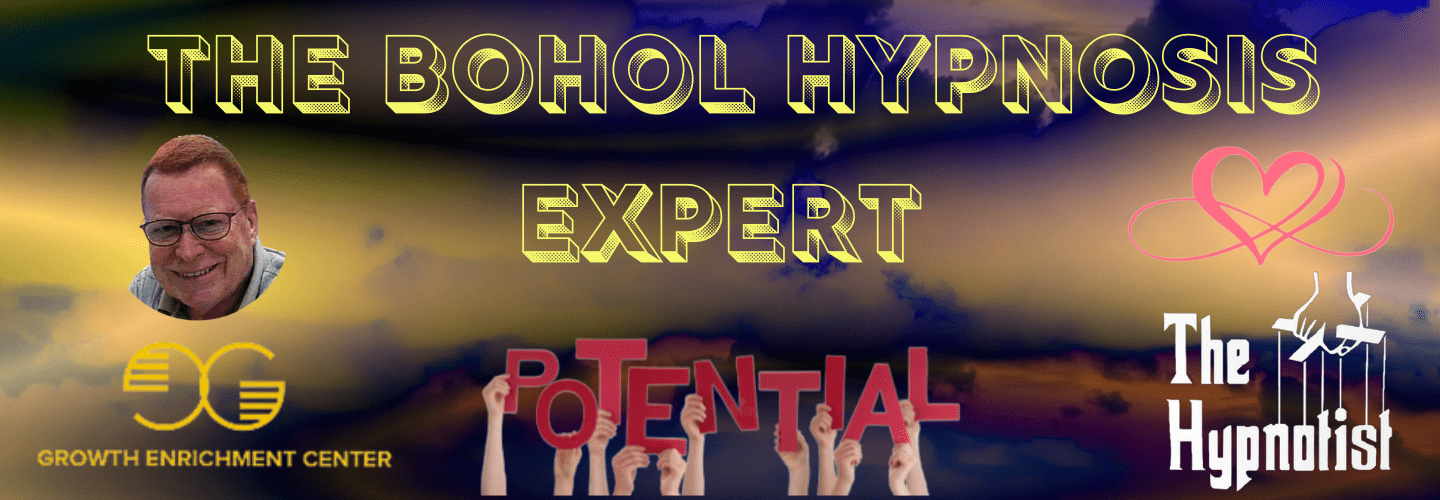
Resolve the fear or phobia of fainting with hypnosis, EFT, and NLP. Hypnosis targets anxiety relief and reframing negative patterns. EFT helps shift beliefs and improve emotional regulation. NLP focuses on mindset transformation. Combining these therapies enhances treatment effectiveness for overcoming fainting phobia.
Understanding Fainting Phobia
Understanding the fear of fainting, known as fainting phobia, is essential for effectively addressing this distressing condition. Fainting phobia can stem from various causes, including a previous traumatic fainting episode, anxiety disorders, or a fear of losing control in public settings. Individuals with this phobia may experience a range of symptoms, such as dizziness, shortness of breath, increased heart rate, sweating, and a sense of impending doom. These symptoms can be triggered by specific situations or even the mere thought of fainting. It is important to recognize that fainting phobia is not simply a fear of fainting but a complex interplay of psychological and physiological factors.
The fear of fainting can have a significant impact on daily functioning and quality of life. Individuals may avoid certain activities or places where they fear fainting, leading to social isolation and heightened anxiety. By understanding the causes and symptoms of fainting phobia, individuals and healthcare professionals can work together to develop effective strategies for managing and overcoming this challenging condition.
Hypnosis: A Powerful Tool

Hypnosis can be a potent tool in addressing fear or phobia of fainting by targeting anxiety relief.
Additionally, techniques like EFT (Emotional Freedom Technique) can help shift deep-rooted beliefs surrounding fainting.
NLP (Neuro-Linguistic Programming) offers strategies for changing mindset patterns that contribute to the fear of fainting.
Hypnosis for Anxiety Relief
Utilizing hypnosis as a tool for anxiety relief has shown promising results in helping individuals overcome their fears and phobias. Through hypnosis, individuals can learn effective anxiety management techniques and relaxation methods that enable them to address the root causes of their anxiety.
By guiding individuals into a deeply relaxed state, hypnosis allows them to access their subconscious mind and reframe negative thought patterns contributing to anxiety. This process can help individuals develop new coping mechanisms, boost self-confidence, and reduce overall anxiety levels.
Additionally, hypnosis for anxiety relief can empower individuals to confront their fears in a safe and controlled environment, fostering a sense of calmness and resilience in the face of anxiety-provoking situations.
EFT to Shift Beliefs
Employing Emotional Freedom Techniques (EFT) can be a transformative method for shifting beliefs, complementing the efficacy of hypnosis as a powerful tool for personal growth and overcoming anxiety. EFT focuses on belief transformation and emotional release, allowing individuals to address deep-seated fears and anxieties.
Here are four key benefits of using EFT for shifting beliefs:
- Self-awareness: EFT encourages individuals to explore and understand their beliefs, leading to greater self-awareness.
- Emotional regulation: By practicing EFT, individuals can learn to manage and release intense emotions effectively.
- Empowerment: Shifting beliefs through EFT empowers individuals to take control of their thoughts and reactions.
- Positive mindset: EFT helps cultivate a positive mindset by replacing limiting beliefs with empowering ones.
NLP for Mindset Change
For individuals seeking a transformation in mindset, NLP presents a powerful methodology worth exploring. NLP, or Neuro-Linguistic Programming, is a technique that focuses on mindset transformation and subconscious reprogramming.
By utilizing NLP techniques, individuals can effectively shift limiting beliefs, behaviors, and thought patterns that may be holding them back from reaching their full potential. Through NLP, individuals can identify and reframe negative thought patterns, replacing them with positive beliefs that empower and motivate.
This process of subconscious reprogramming can lead to profound changes in how individuals perceive themselves and the world around them, fostering a more positive and resilient mindset. NLP offers practical tools and strategies that can help individuals cultivate a mindset geared towards success and personal growth.
Exploring Emotional Freedom Technique (EFT)

Exploring the Emotional Freedom Technique (EFT) can offer individuals a holistic approach to addressing their fear or phobia of fainting by targeting specific energy meridian points in the body. EFT tapping involves gently tapping on these points to restore balance and alleviate emotional distress.
Here are four key aspects of EFT that can aid in resolving the fear of fainting:
- Stress Relief: EFT tapping can help individuals release pent-up stress and anxiety related to their fear of fainting. By tapping on specific points while focusing on the fear, individuals can experience a sense of relaxation and calm.
- Emotional Release: Through EFT, individuals can address and release underlying emotions that contribute to their fear of fainting. This emotional release can lead to a greater sense of control and empowerment.
- Energy Flow: EFT aims to restore the natural flow of energy in the body, promoting overall well-being and emotional stability. By tapping on meridian points, individuals can enhance the flow of energy and alleviate fear.
- Self-Empowerment: Practicing EFT empowers individuals to take an active role in managing their fear of fainting. By learning this technique, individuals can develop a tool for self-soothing and emotional regulation.
NLP Techniques for Fear Resolution

In addressing the fear or phobia of fainting, NLP techniques provide practical tools for fear resolution. Techniques such as NLP anchoring and the visual swish pattern offer effective ways to reframe and overcome the fear associated with fainting episodes.
NLP Anchoring Techniques
Utilizing NLP anchoring techniques can be a powerful method for addressing fear and phobia of fainting, offering a structured approach towards resolving these anxieties.
NLP anchoring involves creating a link between a specific trigger (anchor) and a desired emotional state, allowing individuals to access empowering feelings when needed. In the context of fear or phobia of fainting, anchoring techniques can help reprogram the subconscious mind, replacing fear responses with calmness and confidence.
Here are four key points to contemplate when using NLP anchoring techniques for fear resolution:
- Identify Triggers: Recognize specific situations or thoughts that trigger the fear of fainting.
- Create Positive Anchors: Establish anchors linked to feelings of safety and control.
- Rehearse Anchoring: Practice triggering positive anchors in various scenarios.
- Consistency is Key: Regularly reinforce positive anchors to strengthen their effectiveness.
Visual Swish Pattern
To effectively utilize the Visual Swish Pattern in NLP techniques for fear resolution, practitioners can employ a structured method for transforming fearful associations into positive outcomes. The Swish technique involves subconscious reprogramming through the use of visual imagery, enabling rapid transformation of negative thought patterns.
By guiding the individual to vividly imagine a feared scenario, then swiftly replacing it with a positive image, this technique helps rewire the brain's response to triggers. Through consistent practice, the Visual Swish Pattern can aid in desensitizing individuals to their fears, leading to decreased anxiety and increased feelings of control.
This powerful NLP tool taps into the brain's capacity for change, offering a valuable approach to overcoming phobias and fears related to fainting.
Case Studies and Success Stories

Through real-life experiences and documented cases, individuals overcoming their fear or phobia of fainting provide valuable insights and inspiration for others seeking similar resolutions. Client testimonials and success stories highlight the effectiveness of therapist techniques and case studies in addressing this specific phobia. Here are four key takeaways from these inspiring accounts:
- Personal Transformation: Witnessing how individuals have gone from living in constant fear of fainting to regaining control over their lives can be truly empowering. Hearing about their journey towards overcoming this phobia serves as a beacon of hope for many others struggling with similar anxieties.
- Therapist Support: The pivotal role played by therapists in guiding individuals through tailored techniques and interventions cannot be overstated. The expertise and compassion of these professionals have been instrumental in helping clients confront and conquer their fears.
- Progress Tracking: Tracking the progress of individuals as they work through their fear of fainting showcases the incremental steps leading to significant breakthroughs. These success stories reflect the power of persistence and determination in achieving mental wellness.
- Community Impact: Sharing these success stories within the community fosters a sense of solidarity and encouragement among individuals facing similar challenges. The ripple effect of one person's triumph over their phobia can inspire countless others to commence on their own journey towards healing.
Combining Therapies for Optimal Results

A strategic combination of therapeutic approaches can enhance the effectiveness of treatment for individuals seeking to overcome their fear or phobia of fainting. By utilizing a therapy combination that integrates techniques such as hypnosis, Emotional Freedom Techniques (EFT), and Neuro-Linguistic Programming (NLP), a holistic approach can be achieved, addressing the psychological, emotional, and physical aspects of the fear of fainting.
Combining these therapies allows for a thorough intervention that targets the root causes of the fear or phobia. Hypnosis can help individuals access their subconscious mind to reframe negative beliefs and associations related to fainting. EFT provides a practical tool for managing anxiety and distress associated with fainting triggers. NLP techniques can assist in restructuring thought patterns and behaviors to promote a sense of calm and control in situations that may induce fainting fears.
Overcoming Fainting Triggers

Identifying and understanding specific triggers associated with fainting can be pivotal in developing effective strategies to overcome the fear or phobia of fainting. Fear triggers related to fainting can vary from person to person, making it essential to pinpoint individual triggers for personalized coping strategies.
Here are four practical steps to help overcome fainting triggers:
- Self-awareness: Start by keeping a journal to track situations or environments where fainting triggers occur. This self-awareness can provide valuable insights into patterns and common factors contributing to the fear of fainting.
- Deep breathing exercises: Learning and practicing deep breathing techniques can help manage anxiety and stress levels, which are often linked to fainting triggers. Deep breathing can promote relaxation and reduce the likelihood of fainting episodes.
- Progressive desensitization: Gradually exposing oneself to fainting triggers in a controlled manner can help desensitize the fear response over time. This technique, done under professional guidance, can aid in building resilience against fainting triggers.
- Seeking support: Don't hesitate to seek support from a therapist or counselor specializing in phobias and anxiety disorders. Professional guidance can provide tailored coping strategies and support in overcoming the fear of fainting.
Empowering Self-Help Practices

To enhance self-reliance and build resilience in managing the fear of fainting, individuals can implement effective self-help practices that promote self-awareness and emotional regulation. Self-empowerment plays a vital role in overcoming phobias, including the fear of fainting. By taking proactive steps towards understanding and addressing their fears, individuals can regain a sense of control over their emotions and responses.
One valuable self-help practice is cultivating the mind-body connection, which involves recognizing the impact of thoughts and emotions on physical sensations. Techniques such as mindfulness meditation, deep breathing exercises, and progressive muscle relaxation can help individuals regulate their physiological responses to fear triggers. By fostering awareness of how their thoughts and emotions influence their bodily reactions, individuals can develop greater resilience in facing situations that may induce fainting phobia.
Frequently Asked Questions
Can Fainting Phobia Be Passed Down Through Genetics?
Fainting phobia can have genetic inheritance factors. While treatment effectiveness may vary, understanding familial patterns and seeking professional guidance can help manage inherited fears. Therapy modalities like hypnosis, EFT, and NLP could offer effective solutions.
How Long Does It Typically Take for Hypnosis to Effectively Address Fainting Phobia?
The duration of hypnosis for addressing fainting phobia varies based on individual factors, with success rates often seen within a few sessions. EFT can be effective in a shorter time frame, typically showing results in a few weeks of consistent practice.
Are There Any Potential Side Effects or Risks Associated With Using EFT for Fear Resolution?
Exploring the potential risks and side effects of EFT for fear resolution is essential. Understanding EFT effectiveness, risk factors, and possible adverse outcomes can help individuals make informed decisions regarding their mental health treatments.
Can NLP Techniques Be Used to Address Other Phobias or Anxieties Besides Fainting?
NLP applications offer diverse strategies for anxiety management by addressing various phobias and anxieties beyond fainting. Techniques like reframing, anchoring, and timeline therapy can effectively help individuals overcome fears, improving overall mental well-being and confidence levels.
Are There Any Specific Self-Help Practices or Exercises That Can Help Prevent Fainting Episodes in the Future?
Preventive techniques such as practicing mindfulness, maintaining proper hydration and blood sugar levels, and engaging in regular physical activity can help manage fainting episodes. Understanding the mind-body connection is essential for identifying triggers and taking proactive steps.
Conclusion
To summarize, hypnosis, EFT, and NLP offer effective ways to resolve the fear or phobia of fainting.
These therapeutic techniques can help individuals understand and overcome the root causes of their fear, empowering them to take control of their emotions and responses.
Like a compass guiding a lost traveler, these tools can lead individuals towards a path of healing and freedom from fainting phobia.
Take the Next Step
Do not be afraid to reach out to me, Mark E Wilkins, to assist you in any issues you might have. Most Hypnotherapy sessions last 2 hours and EFT Sessions are usually handled with one session. Life Coaching is 45 minute session, once a week. Self-Hypnosis is taught in one session, and lasts a lifetime.
To make an appointment, first listen to the Pre-talk and fill out he Complementary Healthcare Provider Disclosure. The use the Contact Form to request an appointment with the Bohol Hypnosis Expert.
Self-help downloads are available. The self-hypnosis program to teach you how to self-hypnotize is here.





